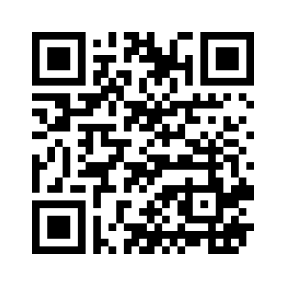Ever experienced a dream where you could see sounds or hear colors? This rare yet fascinating phenomenon is called synesthesia in dreams. It blends senses in extraordinary ways, letting the mind paint music in vivid hues or transform colors into melodies. Far from being random, these dreams often reveal deeper connections between your emotions, creativity, and subconscious processing.
Synesthetic dreams belong to the category of multisensory dreams, where one sense transforms into another. They can feel more vivid and powerful than ordinary dreams because your brain is building an immersive world that combines visual, auditory, tactile, and emotional cues. People often describe these dreams as “life-changing” because they leave behind strong impressions and unlock hidden layers of meaning. For those who practice dream interpretation, these experiences are a goldmine of symbolism and psychological insight.
Why Do We Experience Synesthesia in Dreams?
Synesthesia in dreams happens when the brain’s sensory regions overlap during REM sleep. Just as waking synesthetes naturally associate colors with letters or sounds, dream synesthesia may occur when your subconscious is processing emotions in a symbolic way. According to research in cognitive neuroscience, sensory cross-activation intensifies during dream states, allowing abstract emotions to manifest as colors, tones, or even textures. Dreams use this sensory “language” to communicate feelings that are otherwise difficult to express.
In practical terms, this means your brain is translating feelings into sensory metaphors. Anxiety may appear as chaotic red vibrations, joy may manifest as golden melodies, and sadness may become a deep blue hum. This blending of senses turns emotions into something you can literally “see” or “hear” in your dreams. It’s not just fascinating—it’s one of the most creative ways the mind reveals inner truths.

Common Scenarios of Synesthetic Dreams
Dreamers often describe scenarios such as:
- Hearing colors in dreams: Blue hums like a calm lullaby, red pulses like a drumbeat, yellow sparkles like laughter.
- Seeing sounds in dreams: A voice appears as golden waves, music as spiraling light patterns, whispers as flickering sparks.
- Tasting shapes: Geometric forms carry flavors, blending visual and gustatory senses in strange but meaningful ways.
- Feeling words: Certain spoken phrases create tactile sensations across the body, as if language itself has texture.
These synesthetic dream scenarios are not random illusions but rich metaphors. For example, hearing a color explode could represent overwhelming emotions, while seeing soft music as gentle ripples of light may symbolize peace or healing. Some people even report entire dream landscapes shifting color and shape depending on the music they hear. This proves how deeply connected emotions, creativity, and sensory perception are during the dream state.
What Does It Mean to See Sounds or Hear Colors in Dreams?
The meaning of synesthesia in dreams depends on the emotions and contexts that surround the experience. Psychologists suggest that these dreams often reflect heightened creativity, emotional sensitivity, or a deep need for expression. For example:
- Hearing the color blue might symbolize peace, spirituality, or melancholy.
- Seeing loud noises as chaotic red lightning may reflect stress, conflict, or inner turmoil.
- Tasting music as sweet or bitter could represent how you are emotionally “digesting” an experience.
According to dream psychology, synesthetic dreams are one of the purest examples of the subconscious turning abstract feelings into concrete imagery. They reveal how your mind perceives balance, conflict, joy, and anxiety in symbolic sensory form. Artists, musicians, and creative thinkers are especially prone to these dreams because their minds already blur the line between senses in waking life.

How to Use Synesthetic Dreams for Growth and Creativity
Rather than dismissing these unusual dreams as meaningless, you can use them to fuel personal growth, creativity, and deeper self-awareness. Here are some strategies:
- Dream journaling: Write down what colors, sounds, or textures appeared, and analyze how they connect to your waking emotions.
- Creative translation: Use the dream as raw material for painting, music, or poetry. Many great works of art come from dream inspiration.
- Emotional decoding: Ask what the sensory crossover reveals about your current mood, stress levels, or relationships.
- Dream analysis tools: Apps like Dreamly can help track synesthetic dream patterns, making interpretation easier and more meaningful.
History is full of artists and scientists who credited dreams with breakthroughs. A synesthetic dream is particularly powerful because it delivers insight in a creative, multisensory way. By exploring them, you might unlock not only emotional healing but also artistic innovation and new ways of perceiving life itself.
FAQ: Synesthesia in Dreams
Is dreaming of synesthesia normal?
Yes. While rare, many people experience seeing sounds or hearing colors in dreams, even if they are not synesthetes in waking life.
Does it mean I have synesthesia?
Not necessarily. Dream synesthesia is usually temporary and reflects how the brain cross-processes emotions and senses during REM sleep.
Why are these dreams so vivid?
Because multiple senses overlap, the brain creates intense and memorable dream imagery, making the dream feel more real and impactful.
Can I trigger more synesthetic dreams?
Practicing meditation, listening to music before bed, or engaging in creative activities often increases the chance of multisensory dreams.
Do synesthetic dreams have spiritual meaning?
Some traditions interpret them as signs of spiritual awakening or heightened intuition. Whether spiritual or psychological, they remain powerful tools of self-understanding.
Conclusion: Synesthetic Dreams Are Portals to the Creative Mind
A dream where you see sounds or hear colors is not just a curiosity—it’s a gateway to creativity, emotional depth, and subconscious insight. These multisensory dreams remind us that the mind can interpret reality in limitless ways. By paying attention to these signals, you can uncover hidden meanings, find new inspiration, and even heal emotional wounds.
Whether you explore them for dream interpretation, creative inspiration, or psychological growth, synesthetic dreams stand as proof that your subconscious is far more imaginative than your waking mind. Treat them as messages, and you may discover they hold the key to unlocking your most authentic self.






